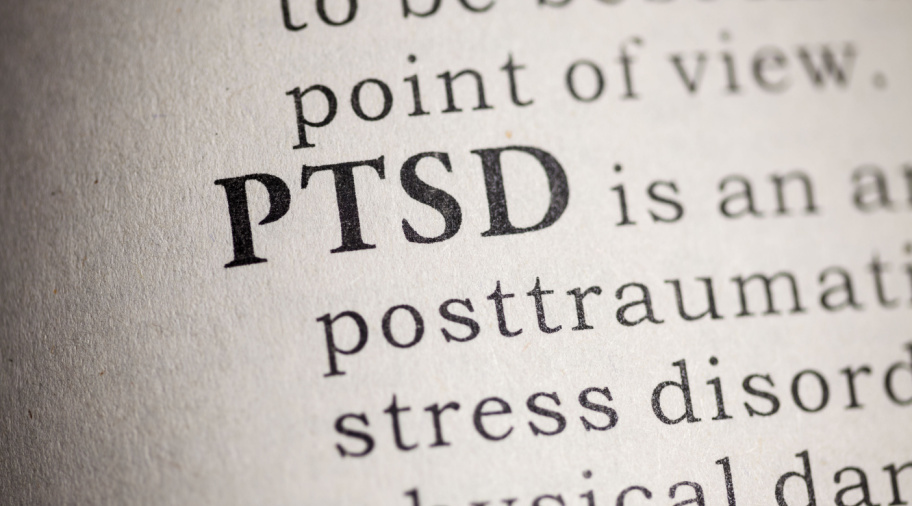The Treatment Of Depression In Older Adults: An Evidence-Based Practices Toolkit
Overview of the instances of depression in older adults
Depression affects more than 19 million Americans of all races, ages, and genders every year (Mental Health America, 2022). Depression is increasingly being recognized as a significant public health concern among older adults (Snowden, Steinman, and Frederick, 2007). While old age is often depicted as a time of rest, reflection, and leisure activity, this is not the case for many older individuals, and depression is an under-reported comorbidity with old age (American Psychological Association, 2012).
The world’s population is aging rapidly. Between 2015 and 2050, it is estimated that the proportion of older adults within the total population will nearly double from 12% to 22%, or an increase from 900 million to 2 billion people over the age of 60 (Mental health of older adults, 2017). Depression is not seen as a normal part of the aging process, but there is a high likelihood that older adults will experience depression symptoms whilst secondary physical health conditions are present, such as dementia, cancer, or reduced independence and mobility (Mental Health America, 2022). Presently there is a high prevalence of older adults experiencing depression and anxiety (Churchill, Cosco, Kervin, Riadi, and Teo, 2020) and older people face special physical and mental health challenges which need to be recognized as unique within the general population (Mental health of older adults, 2017). For example, nearly a quarter of the 600,000 people who experience a stroke in a given year will experience clinical depression (Mental Health America, 2022) and older adults may experience reduced mobility, chronic pain, frailty or other health problems, for which they require some form of long-term care (Mental health of older adults, 2017).
Older persons (commonly described as people over the age of 60) are more likely than the general population to experience adverse life events such bereavement, a drop in socioeconomic status after retirement, and the secondary psychosocial effects of chronic health conditions (Mental health of older adults, 2017). In addition to financial hardships, older adults may also experience a loss of control over their life circumstances due to illness, failing eyesight, hearing loss, decreased mobility, and other physical challenges which can result in isolation, loneliness or psychological distress (American Psychological Association, 2012). These difficult transitions and life circumstances can often give rise to negative emotions such as sadness, anxiety, loneliness, and lowered self-esteem, which in turn may lead to social withdrawal and apathy (American Psychological Association, 2012).
More than two million of the 34 million Americans age 65 and older suffer from some form of depression (Mental Health America, 2022). Along with decreased mobility, health concerns, and loss of income and independence, losing a spouse or partner is often a significant trigger for depression. According to a Mental Health America survey, one-third of widows/widowers meet criteria for depression in the first month after the death of their spouse, and half of these individuals remain clinically depressed after one year. This survey also measured signs and indications of depression among older adults and found that signs of depression are mentioned more frequently by people aged 64 and under than people aged 65 and over. The signs and symptoms mentioned included “a change in eating habits” (29% of respondents under 65 vs. 15% of respondents over 65), “a change in sleeping habits” (33% of under 65 respondents vs. 16% of respondents over 65) and “sadness” (28% of respondents under 65 vs. 15% of respondents aged 64 and over) (Mental Health America, 2022). These results would appear to indicate that individuals under age 65 in the United States are potentially more aware of, and more willing to report signs and symptoms of depression in contrast to Americans over the age of 65.
The challenges in diagnosing depression in older adults
According to one survey, over 20% of adults aged 60 and over suffer from a mental or neurological disorder (excluding migraine disorders) and 6.6% of all disability diagnoses among people over 60 years are attributed to mental and neurological disorders. The most common mental and neurological disorders in this age group are dementia and depression, which affect approximately 5% and 7% of the world’s population of individuals over age 60 (Mental health of older adults, 2017). Despite the high incidence rate of depression among the older adult population, symptoms of depression are often overlooked and untreated in older adults when they coincide with other medical illnesses or life events commonly associated with aging, such as the death of friends and loved ones (Mental Health America, 2022). Depression is a highly treatable condition, but is currently under-reported, under-diagnosed, and under-treated in the older adult population. Despite these challenges, depression among older adults is increasingly seen as an appropriate focus for disease prevention programs and is starting to be viewed as a public health problem (Snowden M, Steinman L, Frederick J. (2007, December 15). Due to the rapidly increasing population of adults over age 65, partnerships of providers, patients, and policy makers must be created to overcome challenges related to funding, training, and implementing treatment solutions for this population (Snowden et. al., 2007).
The low self-reporting of depression symptoms among older adults coincides with a scarcity of access to mental health treatments and care options for older adults in North America. This lack of mental health access further stymies the efforts of individuals seeking assistance, and may increase the stigma of accessing mental health services within the population (Churchill, Cosco, Kervin, Riadi, and Teo, 2020). Older adults who do recognize a need for mental health services often face multiple barriers to accessing care, such as having limited knowledge on how to access services, limited financial means, mobility issues and lack of access to transportation, and an overall negative view of mental illness (Churchill et. al., 2020). Additionally, there is low mental health literacy among North American seniors, and many seniors do not recognize the symptoms of depression or the need for treatment. Rather, many individuals believe that these depressive and anxious feelings are a normal side effect of growing old (Churchill et. al., 2020). Despite the lack of self-reporting, depression is never a “normal” response to aging; it is a serious medical illness that should be treated at any age (Mental Health America, 2022).
Co-occurring illnesses
Further complicating the reporting and treatment of depression in older adults, symptoms of clinical depression can be triggered by other chronic illnesses common in later life, such as Alzheimer’s disease, Parkinson’s disease, heart disease, cancer and arthritis (Mental Health America, 2022). In addition, newly emerging research is shows that for people who had been depressed at any point in time may age more quickly and experience more rapid cell deterioration (Walton, 2013). “Psychological distress, as experienced by depressed persons, has a large, detrimental impact on the ‘wear and tear’ of a person’s body, resulting in accelerated biological aging,” states Josine Verhoeven (Walton, 2013) who authored the study looking at the status of telomeres in depressed persons.
The telomere is the end of a chromosome, and is made up of repetitive sources of non-coding DNA that protect the chromosome from damage. Every time a cell divides, a telomere frays and becomes shorter. Eventually, the telomere will become so short that the cell can no longer divide, and the cell will effectively “die” (National Human Genome Research Institute). The telomeres of depressed persons (or persons who have experienced depression in the past) have been shown to be significantly shorter than telomeres found in never-depressed people. Further, there appears to be a “dose-dependent” relationship, whereby people who’d experienced the most severe depression had the shortest telomeres overall (Walton, 2013). These differences were apparent after taking lifestyle factors such as smoking and drinking into account. Studies such as these show strong evidence that depression accelerates the aging process and increases the wear and tear on the cells of the body, along with previously established associations with heart disease, type 2 diabetes, obesity, dementia, and cancer (Walton, 2013).
The challenges in treating depression in older adults
Depression affects more than 19 million Americans every year, regardless of age, race, or gender. There is a strong likelihood of depression occurring when other physical health conditions are present, which tend to increase as individuals age. For example, nearly a quarter of the 600,000 people who experience a stroke in a given year will experience clinical depression (Mental Health America, 2022). Older Adult attitudes towards depression show a lower level of mental health literacy than those of younger Americans, and about 58% of people aged 65 and older believe that it is “normal” for people to get depressed as they grow older. (Mental Health America, 2022). The symptoms of depression are often overlooked and untreated when they coincide with other medical illnesses or life events in the elderly population. Primary care physicians in particular may be inadequately trained or experienced in recognizing depression among elderly patients.
More than 55% of older persons treated for mental health services received care from primary care physicians, but fewer than 3% of individuals aged 65 and older received treatment from mental health professionals (Mental Health America, 2022). Complicating matters further, primary care physicians are less familiar with mental health conditions and fail to accurately diagnose depression in more than 50% of their patients, resulting in potentially decreased function, increased chances of comorbidities and increased length of hospitalization (Mental Health America, 2022). The survey conducted by Mental Health America also found that approximately 68% of adults aged 65 and over know little or almost nothing about depression, and only 38% of adults aged 65 and over believe that depression is a “health” problem. In fact, only 42% of older adults would seek behavioral health help from a health professional with the majority choosing to “handle it themselves” (Mental Health America, 2022) leading to significant under-reporting of depression symptoms and help-seeking behaviors among this population.
According to data from Mental Health America, older adult patients with symptoms of depression have roughly 50% higher healthcare costs than non-depressed seniors (Mental Health America, 2022). Recent research out in Molecular Psychiatry reports that major depression, whether in the past or present, may actually speed up the aging process at the molecular level (Walton, 2013). Depression is also common in people with Alzheimer’s and related dementias. Dementia can cause some of the same symptoms as depression, making it difficult to differentiate dementia and depression initially. Depression can also be an early warning sign of possible dementia, and there are often increased suicide attempts in people recently diagnosed with dementia. Depression is also a significant predictor of suicide in elderly Americans (Mental Health America, 2022).
Along with increased risk of suicide, depression can lead to eating habits that can result either in obesity or geriatric anorexia, which is a significant loss of appetite and diminished energy levels (American Psychological Association, 2012). Depressed older adults also experience higher rates of poor sleep, insomnia and memory loss. They also have longer than normal reaction times, which increases the hazards associated with cooking, driving, self-medication, and other tasks that require consistent attention. (American Psychological Association, 2012). Older adults with depression will often have a greater instance of physical health conditions such as heart disease. Additionally, untreated depression in an older person with heart disease can negatively affect its outcome as the depressed individual may be less invested in engaging in aftercare or making necessary lifestyle changes to improve their prognosis (Mental health of older adults, 2017). Older adults are also vulnerable to elder abuse, which includes physical, verbal, psychological, financial and sexual abuse as well as abandonment; neglect; and serious losses of dignity and respect. Current evidence suggests that 1 in 6 older people experience elder abuse. Elder abuse can lead not only to physical injuries, but also to serious, sometimes long-lasting psychological consequences, including depression and anxiety (Mental health of older adults, 2017). The increased healthcare costs associated with treatment of depressed seniors may have multiple causes, and require a holistic view of the individual and their mental state (Depression and older adults, 2021).
The evidence-based steps to proper treatment of depression in older adults
While depression and behavioral health concerns among older adults remain under-reported and under-treated, more than 80% of all people with depression can be successfully treated with medication, psychotherapy or a combination of both (Mental Health America, 2022). Standard mental health treatment protocols of psychotherapy and medications have been shown to be effective for older adults (Depression and older adults, 2021). Complimentary health practices such as yoga and specialized diets may also improve well-being and cope with stress, but these approaches cannot successfully treat depression on their own. While they can be used in combination with main line mental health treatments prescribed by a person’s doctor, they should not replace medical treatment (Depression and older adults, 2021).
Bodily changes in older adults can affect the way medications are metabolized and absorbed in the body. There can be a larger risk of drug interactions among older adults due to metabolic changes as well as the different maintenance medications that individuals may be on for other age-related medical conditions (Depression and older adults, 2021). While many older adults have limited financial flexibility, treatment for depression is usually covered by private insurance and Medicare.
Innovations in the treatment of depression in older adults
Treatment of mental health disorders in the elderly can be difficult for many reasons. Older individuals may have difficulty accessing transportation to and from office visits, they may have limited financial resources to access mental health services, and they may not consider behavioral health treatment “necessary”. However, there are several innovative treatment modalities that have developmed in response to heightened demands for mental health interventions that are accessible and affordable to older adults. Many digital mental health interventions (DMHIs) have recently been developed and incorporated into mental health treatments. Digital interventions are promising in their ability to provide researchers, medical practitioners, and patients with personalized tools for assessing behavior, consultation, treatment, and care that can be used remotely and do not require seniors who may struggle with mobility to leave their homes (Churchill et. al., 2020). Reviews and meta-analyses have shown the benefits of DMHIs for the treatment and prevention of depression, anxiety, and other mental illnesses in the general population, but there have been fewer efficacy and outcome studies on the use of DMHIs in the older population (Churchill et. al., 2020).
The fundamental benefit of DMHIs is the increase in accessibility of mental health resources that they can (potentially) offer. Within the older adult population, there exists a subpopulation of even more vulnerable older adults who man be living in abusive families, who are homeless, those facing poverty, older adults belonging to racial minorities, refugees, gender/sexual minorities, and people with physical disabilities and chronic diseases. There has been some research looking into how digital interventions can provide opportunities to alleviate mental health disparities among marginalized populations, there remain issues with internet and technology access among the elderly that can be a barrier to care (Churchill et. al., 2020). There is much work that still needs to be done in order bring the potential benefits of DMHIs into fruition for older adults.
Community support services are also a proven and effective model in improving the overall health of vulnerable populations. The Los Angeles County Department of Mental Health, for example, is engaging in innovation work focused on the development of Health Neighborhoods that address the root causes of trauma within specific populations in specific communities across Los Angeles County. It is the LA DMH’s intent to “provide comprehensive community capacity building strategies targeted at prevention, early intervention and treatment of behavioral health concerns among older adults and vulnerable populations within LA County” (Los Angeles Department of Mental Health). Examples of related models and strategies to this work include Asset-Based Community Development (ABCD), It Takes a Community (ITC), Seven Generations, disseminating community narratives (digital storytelling, Telling Your Story Training), relationship-based resident organizing and civic engagement, Transforming Early Childhood Community Systems (TECCS). Through all of these discreet programs, the LA DMH hopes to “increase community capacity to support and promote child/family safety, health, development, and well-being through increased social connectedness, community mobilization and action, mental health literacy and psycho-education, and access to needed supports and services” ((Los Angeles Department of Mental Health).
Conclusion
Regardless of cause, depression can have profound detrimental effects on the health and quality of life on older adults. The mortality rate for persons over age 65 who suffer from depression, loneliness, or both, are higher than those who report no symptoms of depression. Comorbid medical conditions such as diabetes, cancer, dementia, and heart disease are often less successful for older adults who are depressed than those who report zero depression symptoms. (American Psychological Association, 2012). With a rapidly aging global population, the mental health and well-being of older adults are as important in older age as at any other time of life (Mental health of older adults, 2017).
While most older adults in North America report having good mental health, many older adults are at risk of developing “mental disorders, neurological disorders or substance use problems as well as other health conditions such as diabetes, hearing loss, and osteoarthritis” (Mental health of older adults, 2017). With many seniors adopting and adapting to the latest smartphone technologies, there has been an increase in the popularity and availability of mobile digital tools, leading to the development of mobile digital mental health interventions (DMHIs) including “smartphone applications, remote monitoring and tracking devices, and wearable computers such as smartwatches and virtual/augmented reality headsets” (Churchill et. al., 2020). The World Health Organization, the United Kingdom’s National Health Service, and the US National Institute of Mental Health have all identified smartphone, desktop, and tablet apps as “efficient, cost-effective, and valuable methods to provide accessible treatments for mental disorders such as depression and anxiety” (Churchill et. al., 2020). Finally, as in the case of Los Angeles County and its Health Neighborhoods model, there remain innovative, locally-focused programs aimed at caring for adults throughout the lifespan, and to offer behavioral health support into old age.
References:
Walton, A.G. (2013, November 12). Why depression may speed up the aging process. Forbes. Retrieved from https://www.forbes.com/sites/alicegwalton/2013/11/12/how-depression-can-speed-the-aging-process/?sh=4c9deba27046
Depression and older adults (2021, July 7). National Institutes on Health (NIH) National Institute on Aging (NIA). Retrieved from https://www.nia.nih.gov/health/depression-and-older-adults
Mental health of older adults. (2017, December 12). World Health Organization. Retrieved from https://www.who.int/news-room/fact-sheets/detail/mental-health-of-older-adults
Churchill, R., Cosco, T., Kervin, L., Riadi, I., Teo, K. (2020, December 12). Digital Interventions for Depression and Anxiety in Older Adults: Protocol for a Systematic Review
JMIR Res Protoc 2020;9(12):e22738. Retrieved from https://www.researchprotocols.org/2020/12/e22738/
Aging and depression. (2012). The American Psychological Association. Retrieved from https://www.apa.org/topics/aging-end-life/depression
COUNTY OF LOS ANGELES – DEPARTMENT OF MENTAL HEALTH
PROGRAM SUPPORT BUREAU – MHSA IMPLEMENTATION AND OUTCOMES DIVISION – MHSA Innovation 2 Project – Health Neighborhoods. Retrieved from http://file.lacounty.gov/SDSInter/dmh/220189_INN2HealthNeighborhoodsProposalSLT101514.pdf
Snowden M, Steinman L, Frederick J. (2007, December 15). Treating depression in older adults: challenges to implementing the recommendations of an expert panel. Epub 2007 Dec 15. PMID: 18082015; PMCID: PMC2248773.
Depression in older adults: more facts (2022). Mental Health America. Retrieved from https://www.mhanational.org/depression-older-adults-more-facts
Telomeres. National Human Genome Research Institute. Retrieved from https://www.genome.gov/genetics-glossary/Telomere
Disclaimer: PsychU is supported by Otsuka Pharmaceutical Development & Commercialization, Inc. (OPDC) and Otsuka America Pharmaceutical, Inc. (OAPI). Specific PsychU programs may be supported by OPDC, OAPI and other committed supporters of the mental health treatment community. The opinions expressed by PsychU’s contributors are their own and are not endorsed or recommended by PsychU or its sponsor or the sponsors of the specific PsychU program in which such opinions are expressed. The information provided through PsychU is intended for the educational benefit of mental health care professionals and others who support mental health care. It is not intended as, nor is it a substitute for, medical care, advice, or professional diagnosis. Health care professionals should use their independent medical judgement when reviewing PsychU’s educational resources. Users seeking medical advice should consult with a health care professional. No CME or CEU credits are available through any of the resources provided by PsychU. Some of the contributors may be paid consultants for OPDC and OAPI.





